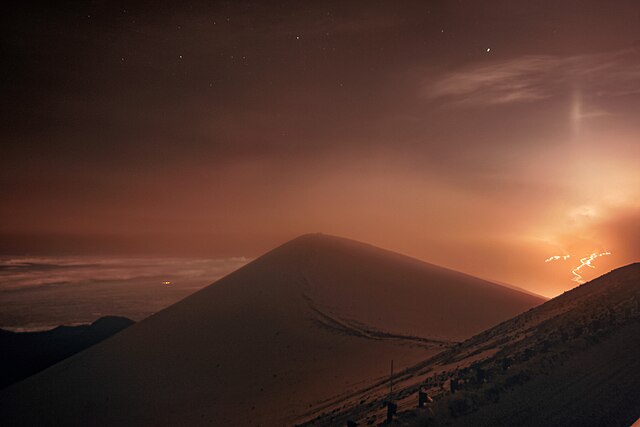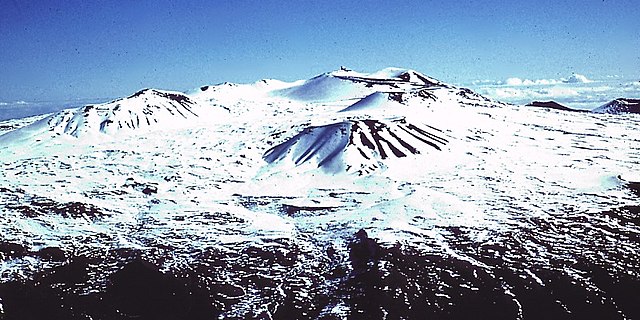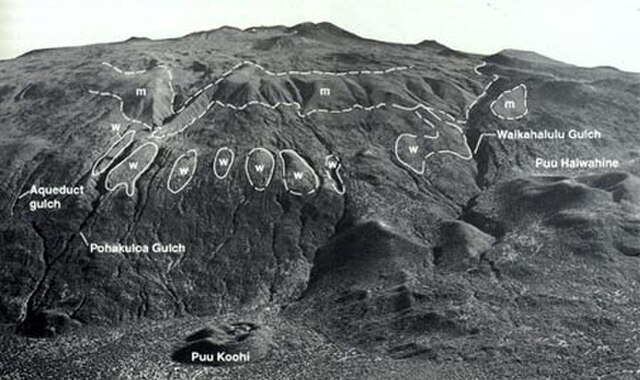Canada–France–Hawaii Telescope
The Canada–France–Hawaii Telescope (CFHT) is located near the summit of Mauna Kea mountain on Hawaii's Big Island at an altitude of 4,204 meters, part of the Mauna Kea Observatory. Operational since 1979, the telescope is a Prime Focus/Cassegrain configuration with a usable aperture diameter of 3.58 metres (11.7 ft).
Canada–France–Hawaii Telescope
CFHT with moon in the background
CFHT in the morning
The telescope in August 2002
Mauna Kea is an inactive shield volcano on the island of Hawaiʻi. Its peak is 4,207.3 m (13,803 ft) above sea level, making it the highest point in Hawaii and second-highest peak of an island on Earth. The peak is about 38 m (125 ft) higher than Mauna Loa, its more massive neighbor. Mauna Kea is unusually topographically prominent for its height: its wet prominence is fifteenth in the world among mountains, at 4,205 m (13,796 ft); its dry prominence is 9,330 m (30,610 ft). This dry prominence is greater than Mount Everest's height above sea level of 8,848.86 m (29,032 ft), and some authorities have labeled Mauna Kea the tallest mountain in the world, from its underwater base. Mauna Kea is ranked 8th by topographic isolation.
Mauna Kea in December 2007, with its seasonal snow cap visible
Lava flows from Mauna Loa caught by one of the International Gemini Observatory's Cloudcams, which operates 24/7 near the snow-covered summit of Maunakea (the highest point in the image).(on 27 November 2022).
Scoria and cinder cones on Mauna Kea's summit in winter
Glacial evidence on Mauna Kea, outlining terminal moraines ("m") and till ("w")








